Fighter Pilot Diaries: Love the one you’re with
This column is part of a series from “Josh Arakes,” a senior U.S. military pilot who has obtained permission to share some of his life with Hagerty. Josh’s writing orbits the intersection of cars, the rigors of military aviation, and how we all think and work under pressure. Enjoy! —Ed.
As fickle as car maintenance can sometimes be (see New Jet, New Day), aircraft maintenance is even more so. This is understandable, especially when so many lives are at stake. And when an aircraft engine suffers a major failure, for example, there’s no pulling over to the side of the road to await the taxi of shame. Tighter maintenance intervals, higher quality of parts, and more advanced mechanic certification—these are sensible precautions for aircraft compared with earth-bound people movers.
For all the requirements to keep a civilian aircraft airborne, those pale in comparison to keeping a modern fighter jet in the air. The mere going from point A to point B that rules most concerns in the civilian world is a secondary concern, at best, in military flying. It is expected that we fighter pilots are highly proficient at the point-A-to-point-B stuff, so much so that those matters are rarely discussed in brief/debrief. Maybe we’ll talk over the impact of the weather forecast. Instead, the vast majority of prep time is spent covering the tactical portion of the mission, because mission success is what we really care about.
From a maintenance perspective, not only do the systems that allow the fighter jet to do all that basic flying stuff need to be working perfectly, but the tactical systems (radar, weapons, sensors, etc.) must also be working. If not, well, there’s no reason to even take off.
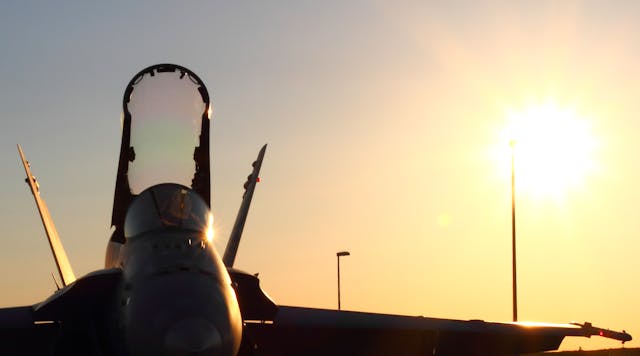
For all the efforts military maintainers invest to keep the jets healthy and flying, fighter jet availability can feel very cyclical. For weeks, it can seem as though the jets are all green and flyable with few, if any, serious issues. Slowly, however, problems will start to become more common. Before too much longer, it can feel like all the jets are broken and nothing works. Then, as before, you can see things shift; soon the jets green up again.
With that in mind, it’s imperative that flyers and maintenance personnel have a great working relationship. I spent a couple of years running the flying operations of a squadron, and cultivating a strong relationship with maintenance leadership was supremely important to achieving any success. Trust and openness was paramount. When someone would look me in the eye and say they needed to cut back on the number of jets available to fly (doing so would free up personnel from launching, recovering, and preparing the jets to fly and allow them to focus on getting the whole fleet healthy again) acquiesce to their request was the right move. Conversely, there were missions for which I really needed to have jets. I’d convey that to maintenance and they’d do all they could to make it happen. The key was trust and only asking for those favors when really necessary.
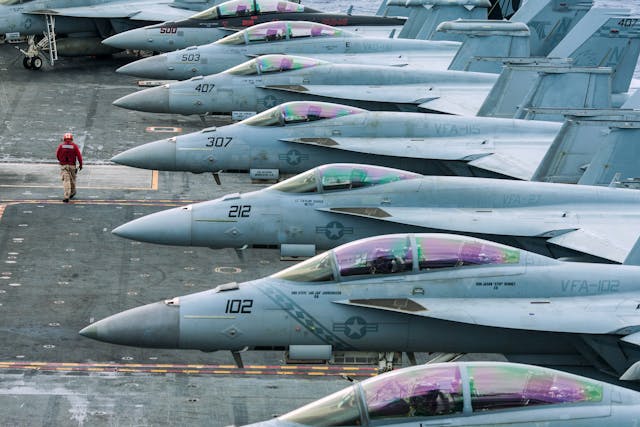
If at all possible, maintenance will have enough aircraft to meet the agreed-to flying schedule, plus a spare aircraft or two. Spares are backup jets ready to be utilized in the event of a failure on the ground that precludes a primary jet from flying. Pilots will shut down the engines, climb out, leave the broken jet, and quickly preflight and launch in the spare so they can still participate in the mission. (We call leaving the primary aircraft and going to a spare “stepping to the spare.”) The time a pilot has available to them to troubleshoot an issue on the ground prior to stepping to a spare is inversely proportional to the mission’s import; “very important” means minimal troubleshooting time, while a normal training sortie generally allows for a bit more flexibility.
Prior to the flight briefing, the flight lead typically gets a status update on the aircraft in their formation, as well as spare availability, and will convey that info to the other aircrew during the brief. Two phrases here are common to describe the overall aircraft status: Love The One You’re With, and Go Ugly Early.
Love The One You’re With conveys that there aren’t any spare aircraft. Thus, the message is to take extra care to ensure the jet is good to fly and spend whatever time is required to resolve any issues. Remember, if you’re going flying it has to happen in that jet, even if that means you take off late and join the mission partway through.
Go Ugly Early means there are multiple spare aircraft available, and the mission is important enough to step to a spare jet after minimal time spent fixing an issue. Keeping on timeline is crucial.
On a good day, everybody launches in their original jet, successfully completes their mission, and returns the jet to maintenance-issue-free. I’ve experienced that many hundreds of times over my career.
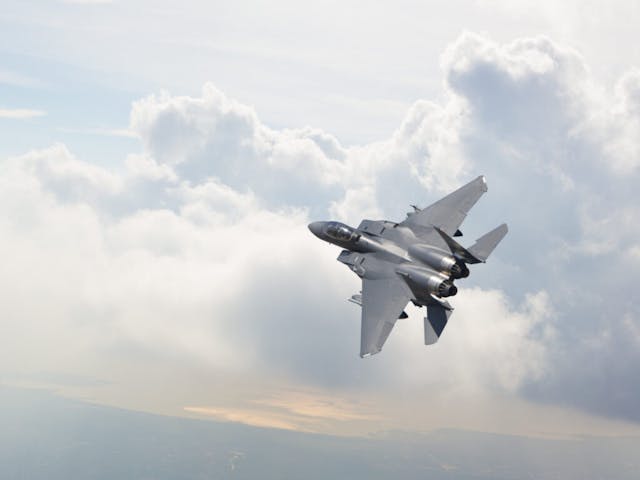
The tough calls arise when you’re faced with a situation that isn’t explicitly addressed in the various maintenance checklists and manuals. These get even trickier when it’s a Love The One You’re With day.
The strangest issue I saw occurred after I had the jet fully up, running, and ready to taxi. Taking a moment to look around to see if I missed anything, I noticed a small jet of cool air on my wrist that clearly didn’t emanate from the A/C vents. Taking off my glove, I searched for the source of the air and discovered that the canopy seal had a pin-sized hole in it. (When the canopy closes, a small seal that kind of looks like the rubber weatherstrip material around your car’s windows inflates. The seal helps maintain your cockpit’s air pressure at higher altitudes where the outside air pressure is much less.) While it wasn’t written anywhere that said I explicitly shouldn’t go flying, and though the risk of a catastrophic failure was (probably) very low, I resolved that having a rapid decompression at altitude—or worse, having the canopy depart the aircraft due to a failed seal—made giving the jet back to maintenance the right call.
Perhaps the worst day I’ve seen, excluding any accidents or mishaps, was the day we started a briefing expecting six aircraft in our formation. There weren’t any spare aircraft—a true Love The One You’re With day. Before the brief ended, we were told we only had five jets. (Deciding who doesn’t get to fly in that scenario is one of the less fun parts of being a flight lead; we call the pilot getting kicked out the “designated mort.”) When the time came to walk out to the jets, we were now down to four good aircraft. Only three aircraft actually started engines, and I broke soon after, so only two aircraft ultimately taxied to the runway. Sadly, jet number five then broke, leaving a single aircraft from the original six cleared for takeoff. We brief up many contingencies as a formation, but it’s pretty tough to accomplish the mission’s training objectives when only one of six jets gets airborne.
How about a more terrestrial example? Well, doing a week-long off-road adventure can be tough without a vehicle in which to conduct said adventure. I love our Miata but, contrary to popular belief, Miata isn’t always the answer.

Shortly after our LX470’s engine failed, we planned to drive, and got permits for, a moderately difficult trail ride a few hundred miles away. We coordinated with Bob, my inimitable brother-in-law and Chief Encourager of Automotive Shenanigans, and found a date that both worked for us and him and was far enough in the future that would ensure (cough, cough) we’d have our LX470 back and ready to rock.
Having seen our 470 in action on previous trips, and wanting a piece of the Land Cruiser mystique, Bob decided to purchase an 80-series several weeks before our trip. While our 100-series LX470 is a highly capable off-roader, the consensus seems to be that the 80-series’ solid front axle makes it the most capable of the entire U.S. Land Cruiser line. He found one in Arizona that looked to be in great shape and flew out, picked it up, and drove it home.
As the weeks ticked by, it looked less and less likely that our LX would be ready in time. Ideally its engine transplant would have been complete several weeks before the trip so we could put lots of miles on it around town to gain confidence the repair was done correctly, and it wouldn’t leave us stranded in the true middle of nowhere. However, in reading the tea leaves, Going Ugly Early was the clear correct choice here; about six weeks before the trip I reserved a pickup truck from a rental car agency in town. The cancellation policy was friendly enough that backing out of the rental wouldn’t be a big deal, but, to me, the writing on the wall was clear. I stepped to this spare.

(Considering this trip occurred more than four months prior to my writing this article and, best case, we’re just under two weeks away from getting our LX back, Going Ugly Early was definitely the way to go.)
Which brings me to Bob and his 80 series. A couple of weeks prior to the trip, he realized one of his rear spring perches had been consumed by rust to a point that he doubted it would survive the upcoming days of beatings on the trail. A significantly more accomplished mechanic and welder than I, he set to work removing what was left of the perch and replacing it with a new one. However, life intervened and progress slowed, then stopped. Eternally optimistic, Bob valiantly fought, in true Love The One You’re With style, to finish the repairs so he could still join in on the fun.
As we frequently chatted in preparation for the trip, the status of his 80 series was the centerpiece of our discussion. Finally, he was forced to admit the repair wasn’t going to happen in time. There was a spare vehicle available in the form of a sibling’s Ram 2500, so he stepped to the spare at the last possible moment to save the trip.
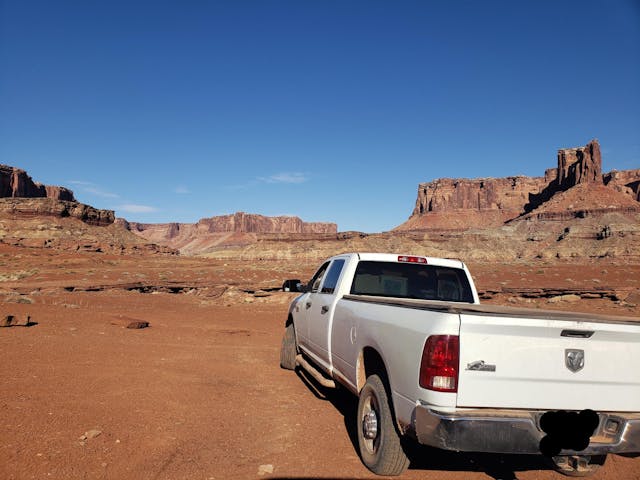
Even with two spares, the trip was truly an epic four days of off-roading through incredible terrain, plus a couple additional days that weren’t quite so aggressive. Both vehicles handled the varying terrain without significant issue, though the Ram’s long bed made for a tight fit in a couple spots. We somehow ended up in a brand new F-150 Platinum with about 2500 miles on it as our spare, and I was nervous about scratching up a $75,000 truck still reeking of new-car smell, but it carried us and all our gear comfortably and covered the terrain with aplomb.

We’re not going to talk about what the rental agreement said regarding driving the vehicle off-road, but suffice to say I definitely washed it thoroughly and vacuumed out any mud before returning it, just in case. I was stunned the bed didn’t have a bed liner of any sort; who doesn’t check the $495 bed liner option on a truck that has EVERY other available option? For safety’s sake, I put down a bunch of cardboard in the bed to ensure we didn’t scratch anything.
Is going from two rugged Land Cruisers to zero the truck equivalent of dropping from six jets to none? No idea. But, either way, aircraft and automotive health can be fickle, even with the best preventative maintenance.
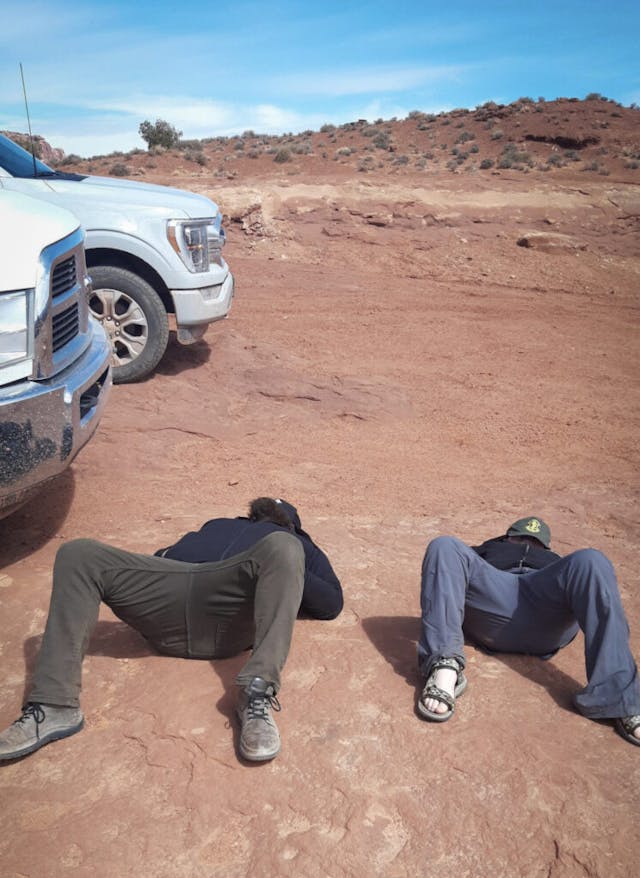
To wit, our Honda Odyssey’s battery died 10 days ago. We drove it home from an activity one night and the battery was totally dead the next morning, no lights whatsoever on. It could be jump-started just fine, but the thing wouldn’t take a charge. Life was crazy busy, and we had a spare vehicle, so you know what that means: Go Ugly Early. We let the Honda sit in the driveway for a week until we could get to it, driving our Mazda6 and Miata instead. If we lacked an additional vehicle, you can bet I would have Love-The-One-You’re-With’d the scenario and gotten the battery checked and replaced the day it died.
These two philosophies can easily be applied to our own personal vehicle decisions, not just fighter jets. Your mileage, and individual circumstances, will vary, but use your best judgment and don’t be afraid to make the appropriate call to the situation: Go Ugly Early or Love The One You’re With!

***
Check out the Hagerty Media homepage so you don’t miss a single story, or better yet, bookmark it. To get our best stories delivered right to your inbox, subscribe to our newsletters.
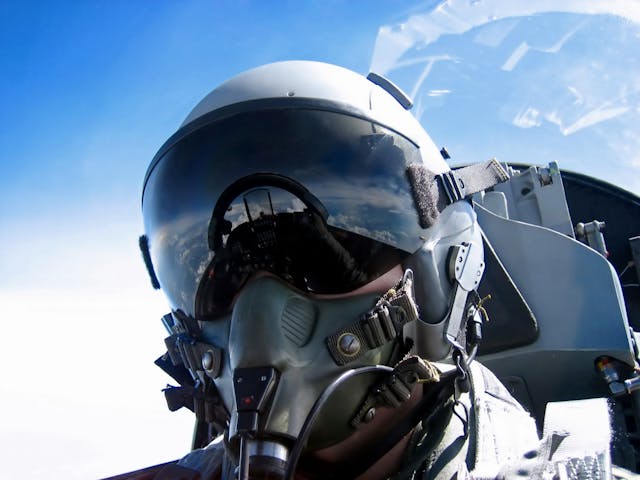


Josh, great article, you make the actions of our flyers seem so everyday when they are really dealing with multimillion dollar complex machines. Oh, and any comment on the flyer that lost his ride over South Carolina and had civilians looking for it. Do you think he will be flying a desk for the foreseeable future?
Without knowing any details on what happened with that F-35, I can’t speculate as whether the pilot will be flying a desk or not. Once the investigation is complete the findings will be released.
Glad you enjoyed the article!
I’ve lost my car in the Mall parking lot a time or two. South Carolina is MUCH larger and has more trees. But yes, no doubt that pilot is not Loving The One He’s With or Jumping The Spare either one for quite some time to come. [my opinion and my opinion only]
Go Ugly Early or Love The One You’re With! Love that.
Thanks!
Sometimes you just don’t make the dance
Yeah, and it sucks to not make the dance when all your buddies do!
Again Josh finds a slice of a life most of us will never see and makes it relatable. Now I wonder: while I’m sure every unit of the same model aircraft is intended to be identical to all the others, do pilots have favorites? Are pilots assigned to the same aircraft as long as it’s available? If so, does your jet say “Josh Arakes – Ace Pilot & Popular Columnist” on the sill?
Getting your name on an aircraft is definitely very cool. However, you fly whichever aircraft gets assigned to you for a given sortie, not just the one with your name on it. I don’t have a jet with my name on it at the moment since I’m in a non-flying job, but it’s typically just your rank and name on the jet (sometimes with your callsign between your first and last name).
My coworkers don’t know about this columnist job, just my boss who, along with the JAG, approved me to write for Hagerty on the side.
Thanks for reading!
Way back in WWII, my father was a fighter pilot, flying P-47 Thunderbolts off of Corsica. He had “his” airplane but, likewise, hot seated as required to make the missions. I was surprised, reading through his flight logs, that he flew more missions in a “bubble top” than in his beloved “razorback.” So, that has apparently not changed. Thanks, Josh!
P-47? That’s a sweet ride. Thanks to your dad for his service and I think it’s awesome you have his log books.
Thanks, Josh, for the always great reads. Two of my favourite things – automotive and airborne – hopefully one day you will (have permission to) write a full book – pseudonym or not, I know it will be a great read!
One of my maternal uncles flew for the RCAF and held reconnaissance and flight-training roles over the years, along with a station in Arizona flying with the USAF, and I love hearing his stories of flying. Even better when he’s with his old buddy, the flight commander of the largest squadron in Canada. Some of the stories are gut-splitting and others quite melancholy.
Please keep writing!